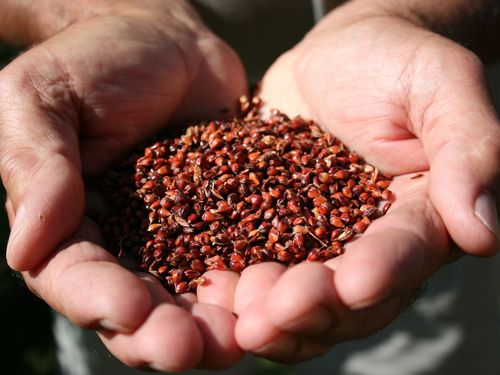The production and practice of playing the fife
Performing arts throughout Austria, inscribed 2024
The fife, known as the ‘Seitelpfeife’ or the ‘Schwegel’ in German, is a traditional woodwind instrument with six finger holes and is mainly played in the Alpine region, particularly in the Salzkammergut. Despite its simple design, there are only a few craftspeople still making the fife today. However, it remains an integral part of shooters' music in the Salzkammergut and plays a key role in regional customs and festivals.
The fife is a wooden pipe which is sealed with a cork stopper on the embouchure side. It has six finger holes, its ends are partly fitted with decorative buttons, and it is blown through the embouchure hole by holding the instrument to one side. Its long history makes the fife a precursor to today's flute instruments, such as the transverse flute. Its production techniques are largely passed on orally from the producers to their descendants or interested parties. The moulds for finger holes and bore diameters are traditional templates that have been handed down from generation to generation. The fife is produced on a lathe in several stages and made exclusively from local hardwoods. In many parts of the Alpine region, the fife is played as a traditional folk music instrument. It is therefore closely linked to folk culture events in the respective regions. In the Salzkammergut in particular, the fife is an integral part of shooters’ events.
The annual Pipers' Day ('Pfeifertag'), which has been held on Assumption Day (15th August) since 1925 is significant to this practice. This large gathering is held on different mountain pastures in the Salzkammergut on an alternating basis. To ensure that this does not become a general gathering of musicians, guidelines were issued stating that music may only be played on the fife, drums, and Jew's harp until midday on this day. Young musicians are partly trained within families and circles of friends, or otherwise at seminars and pipe players' meetings. An important safeguarding measure is being carried out at the technical college HTBLA Hallstatt, where the making and playing of the fife is taught in the school subject instrument making and woodturning. At the middle school NMS Gosau, pupils are also taught to play the fife in music lessons on a case-by-case basis. Annual folk music seminars organised by the folk song societies of Upper Austria, Salzburg, and Styria also contribute to the promotion and safeguarding of the practice of playing the fife.
Contact
Downloads
- [Translate to English:] Bewerbungsmappe 194 KB (pdf)
- [Translate to English:] Expertise Egger 105 KB (pdf)
- [Translate to English:] Expertise Ohms 105 KB (pdf)

![[Translate to English:] Seitelpfeife I](/fileadmin/Redaktion/Kultur/IKE/IKE-DB/images/Seitelpfeife_I_c_Schiendorfer_Leo.jpg)
![[Translate to EN:] © J. Ségur/ZED, with the permission of UNESCO](/fileadmin/_processed_/d/b/csm_Convention-2003-IKE_0832a6a47d.jpg)
![[Translate to EN:] © ÖUK](/fileadmin/_processed_/3/9/csm_P1011318_7eac86402f.jpg)

![[Translate to EN:] © Weitblickfilm](/fileadmin/_processed_/9/8/csm_Workshop_17_2dee1e1fd8.jpg)